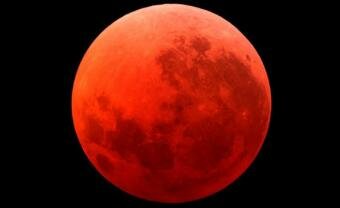A team of mathematical experts have said that 1729, which is also known as the Ramanujan-Hardy number, is linked to aspects of string theory and...

Did you see the total lunar eclipse on September 27? If not, then here’s good news as the next such celestial event is scheduled to take place on August 21, 2017. Such an event is rare and the next eclipse will cover a very narrow swath, said experts.
The total lunar eclipse is also called the Blood Moon as the moon may look red during the eclipse. A total lunar eclipse happens when earth comes between the sun and the full moon. At that time, it blocks any direct sunlight from reaching the moon.
At the beginning of September 27’s total lunar eclipse, the skies were dark and the moon was completely covered. But as the time passed, the sky partly cleared and the moon appeared peeking out from behind the clouds. This marked as the progress of the eclipse.
Unfortunately, the next total lunar eclipse will cover very less region due to which the eclipse won’t be visible from Mississippi. One can see the rare event if one travels to St. Louis, said the experts.
The next total lunar eclipse won’t be visible again in Mississippi until January 20, 2019. The next eclipse visible from Hattiesburg will be on April 8, 2024, and it will be a partial eclipse.
The moon doesn’t emit its own light instead, light from the sun reflects off the moon, some of which comes towards earth. However, this doesn’t happen during a total lunar eclipse, when earth’s shadow covers the moon.
If seeing from moon during a total lunar eclipse, earth appears to have a thin ring of red light around it. The red light which is much dimmer than the full light from the sun reflects off the moon and comes back toward earth.
“It had the potential to be the set of a drama or a journey of starting off on Earth and heading through that space between the Earth and the moon,” Rooker said. “And when you get to the moon, instead of deciding to go back, you decide, ‘I’m gonna keep going.’”
“We’ve repaired a number of pieces of equipment and made brackets for [Rooker’s] art cables,” Starnes said. “This is probably our sixth or seventh project for him.”









